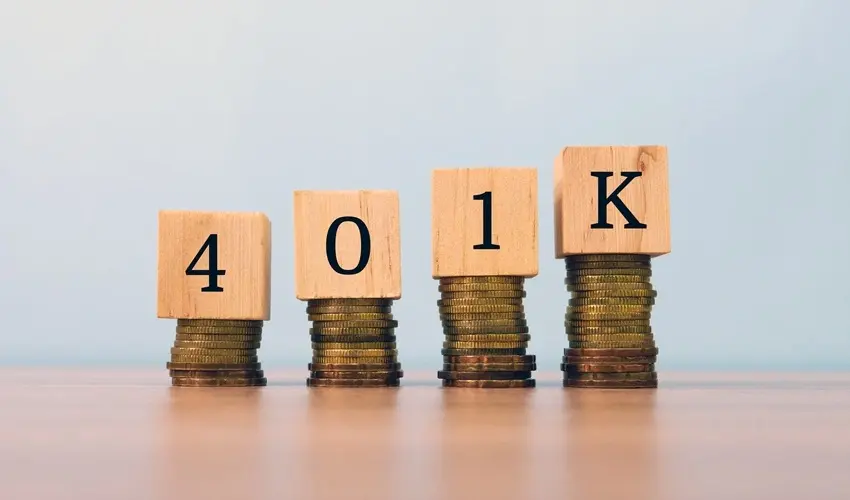New 401k Rules | Balancing Access and Savings

When considering short-term funding options, participants are often advised to avoid tapping into their 401(k) accounts through loans or hardship withdrawals, as early withdrawals can impede long-term retirement savings. However, the SECURE 2.0 Act of 2022 has introduced more penalty-free emergency withdrawal provisions, offering increased liquidity and flexibility within 401(k) plans. While some see this as a risk to retirement balances, a recent Vanguard study found that participant contribution rates tend to remain stable before and after taking loans or hardship withdrawals.
Increased Accessibility Under SECURE 2.0
Fiona Greig, global head of investor research and policy at Vanguard, went on to say, “I think the promise of [the SECURE 2.0 provision] was that it would cause more people to participate in 401(k) plans or to save more and increase rates in 401(k) plans if they knew that the money was accessible to them in a hardship or a pinch... The downside though, of these expanded liquidity options, is that they could lead to leakage. They could cause more people to take withdrawals and ultimately result in lower balances.”
Turning Withdrawals into Loans
According to the paper's authors, plan sponsors should introduce a provision called "automatic repayment" that would enable participants to pay back withdrawals over time through payroll deferrals, much like a loan, in order to encourage retirement savings. This strategy might encourage consistent saving practices even after emergency funds have been accessed. In fact, according to Vanguard data, the majority of participants who made hardship withdrawals or loans in 2021 did not lower their contribution rates afterwards.
The study found that, even after taking a 401(k) loan or hardship withdrawal, participants rarely cut back on their contribution rates. In 2021, 26% of loan takers and 24% of hardship withdrawal takers voluntarily reduced their contribution rates at some time during the two years after issue, according to Vanguard statistics. Approximately the same percentage of participants, 26% of loan takers and 24% of hardship withdrawal takers, voluntarily increased their contributions at some time throughout the two-year issuance period.
Additionally, frequent payroll deferrals help 401(k) loan recipients who stay employed long enough to pay back their loans. Researchers found that most individuals could return a $1,000 withdrawal within two years with a slight rise in contribution rates of roughly two percentage points.
Greig suggests that a feature prompting participants to increase their contributions slightly could help them repay emergency withdrawals more efficiently. Once the loan is repaid, sponsors could encourage participants to maintain their higher contribution rate, thus boosting long-term savings.
The Bigger Financial Picture
Greig points out that while participants seem to manage 401(k) repayments without issue, the study only covers 401(k) data. Broader financial health, such as credit card debt or student loans, may impact participants’ overall financial well-being. Rebecca Liebman, co-founder and CEO of LearnLux, notes that “There’s a lot of other data that we see in credit card debt, medical debt, student debt, emergency savings data, credit score data … that is impacting these decisions”. She continues, “When you’re only looking at 401(k) data, you are getting a skewed picture of financial health in your organization, because if you look at the macro trends, people are living in debt. People are pulling that money from somewhere.”
Liebman stresses that in order to avoid taking out loans from their retirement plan, members should make sure they have emergency reserves and a debt-payoff plan so they know where they can find liquidity.
Automatic Features’ Role in Financial Habits
According to Kelli Send, a senior vice president at Francis LLC, the ability to repay loans does not always indicate that a person's financial situation has improved. “We’ve made auto features so amazing in 401(k) plans, and it’s generally been a very good outcome,” She says. “But it has lessened the attention required to manage your 401(k), which may perhaps lead to this positive behavior that Vanguard is seeing.”
Send recommends setting limits on 401(k) loans to prevent employees from accumulating multiple loans simultaneously, which could lead to financial strain. While she supports 401(k) loans as a useful option, Send emphasizes the importance of mindful financial behavior and advocates for plan designs that promote continued saving after loan repayment.
Overall, Greig believes that thoughtful plan design can make a significant difference in participant behavior. By structuring 401(k) plans to support faster repayment or continued savings, plan sponsors can help participants maintain strong financial habits that benefit their long-term retirement readiness.
Sources________________________________________
Looking for more information?
Contact the RPAG Support Team at support@rpag.com to learn more about RPAG and get help with our platform, suite of services, next-gen technology, or anything else!



